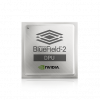
Reading Time: 4 minutesMore than 10 years ago, I wrote a blog post with the question is backup to tape dead? The answer was no, but what about tapes usage now, on 2024? Data has grow and the demand of solution to manage cold data also. For this reason there is a high investment in cold data storage solution and tape is still relevant also today!













